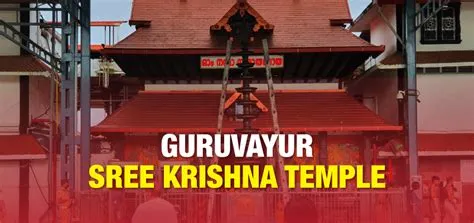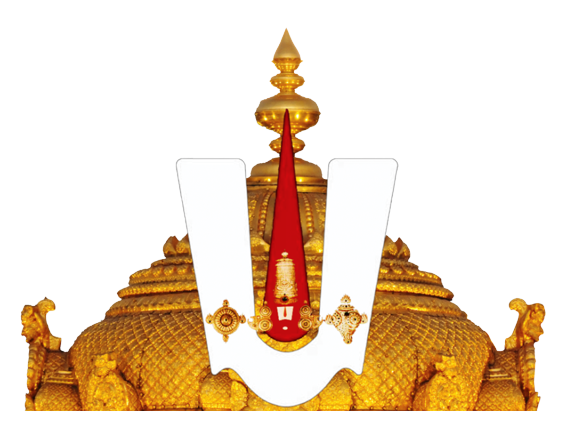Discover why Guruvayur Temple is one of the holiest Krishna temples in India. Learn about its sacred idol, legends, rituals, miracles, and festivals that make it the Dwaraka of the South. Plan your pilgrimage with travel tips, darshan details, and temple traditions.
Nestled in the town of Guruvayur in Kerala, India, the Guruvayur Temple stands as a beacon of devotion and spirituality, attracting millions of devotees annually. Often referred to as the “Dwaraka of the South,” this temple is dedicated to Lord Krishna, known here as Guruvayurappan. Its rich history, captivating legends, and profound religious significance make it one of the holiest Krishna temples in India.

Table of Contents
Historical Origins of Guruvayur Temple
The origins of the Guruvayur Temple are steeped in ancient legends and traditions. According to lore, the deity worshipped here is over 5,000 years old. The central shrine is believed to have been rebuilt in 1638 A.D., signifying its longstanding importance in the region.
The temple’s early references can be traced back to the 14th century Tamil work ‘Kokasandesam,’ where it is mentioned as “Kuruvayur.” Over the centuries, numerous literary works have highlighted the temple’s significance, with Melpathur Narayana Bhattathiri’s ‘Narayaneeyam’ playing a pivotal role in bringing widespread attention to Guruvayur.
The Legend of Guruvayurappan
Central to the temple’s sanctity is the legend of Guruvayurappan. It is believed that the deity’s idol was originally worshipped by Lord Krishna himself in Dwaraka. As Dwaraka faced submersion at the end of the Dwapara Yuga, Lord Krishna instructed his devotee, Uddhava, to save the sacred idol. With the assistance of Guru (Brihaspati) and Vayu (the Wind God), the idol was installed in the present location of Guruvayur, thus deriving the name ‘Guruvayur’ from ‘Guru’ and ‘Vayu.’
Architectural Splendor
The Guruvayur Temple showcases traditional Kerala-style architecture, characterized by its tiered roofs, intricate wood carvings, and copper-plated roofing. The temple complex includes the main sanctum (Sreekovil), where the idol of Guruvayurappan resides, surrounded by subsidiary shrines dedicated to Ganapathi, Ayyappan, and Bhagavathi. The temple tank, known as Rudratheertham, holds historical significance, with legends suggesting that Lord Shiva performed penance on its banks.
Unique Rituals and Traditions at Guruvayur Temple
Devotees visiting the Guruvayur Temple can witness and partake in various rituals that have been preserved over centuries:
- Nirmalyam: The early morning ritual where the deity is adorned with the previous day’s garlands and flowers, allowing devotees to have a glimpse before the new decorations are applied.
- Seeveli: A procession where the idol is carried on an elephant around the temple premises, accompanied by traditional music and chants.
- Thulabharam: Devotees offer goods equivalent to their body weight, ranging from grains to gold, as a mark of gratitude and devotion.
- Ekadasi Vilakku: The temple is illuminated with countless lamps on the auspicious day of Ekadasi, creating a mesmerizing spectacle.
These rituals not only enhance the spiritual experience but also reflect the deep-rooted cultural heritage associated with the temple.
Festivals Celebrated at Guruvayur
The temple is renowned for its vibrant festivals, which draw devotees from across the globe:
- Guruvayur Ekadasi: Celebrated in the Malayalam month of Vrischikam (November-December), this festival marks the auspicious day when Lord Krishna imparted the Bhagavad Gita to Arjuna. Devotees observe fasting and engage in continuous worship.
- Janmashtami (Ashtami Rohini): Commemorating the birth of Lord Krishna, the temple witnesses special poojas, cultural performances, and feasts.
- Vishu: The Malayalam New Year, celebrated in April, where devotees seek the blessings of Guruvayurappan for prosperity and well-being.
- Chembai Sangeetholsavam: A grand music festival held in memory of the legendary Carnatic musician Chembai Vaidyanatha Bhagavathar, attracting artists and enthusiasts alike.
These festivals not only serve as religious observances but also as cultural congregations, preserving and promoting the rich traditions of Kerala.
Miracles and Devotee Experiences
The Guruvayur Temple is often associated with numerous miracles experienced by devotees:
- Healing of Diseases: Many believe that sincere prayers to Guruvayurappan have resulted in the curing of chronic ailments.
- Fulfillment of Vows: Devotees often return to the temple to offer thanks after their wishes and vows are fulfilled, attributing their success to the blessings of the deity.
- Divine Visions: There are accounts of devotees experiencing visions of Lord Krishna, especially during the early morning ‘Nirmalyam’ darshan.
These experiences have been passed down through generations, reinforcing the temple’s reputation as a place where the divine presence is palpable.
Accessibility and Visitor Information
Guruvayur is well-connected by road and rail, making it accessible for pilgrims:
- By Road: Regular bus services operate from major cities in Kerala and neighboring states to Guruvayur.
- By Rail: The Guruvayur Railway Station connects to various parts of Kerala and beyond.
- By Air: The nearest airport is Cochin International Airport (COK), approximately 80 km away. From there, taxis and buses are available for a hassle-free journey to Guruvayur.
Why Guruvayur Temple is One of the Holiest Krishna Temples in India
Several factors contribute to Guruvayur Temple’s prominent spiritual status, making it one of the most revered Krishna temples in India:
1. The Sacred Idol of Guruvayurappan
- The main deity of the temple is Lord Krishna in his Chaturbhuja (four-armed) form, holding the conch (Panchajanya), discus (Sudarshana Chakra), mace (Kaumodaki), and lotus.
- This idol is said to be made of ‘Patala Anjanam’ (black stone) and was worshipped by Lord Krishna in Dwaraka, making it one of the oldest Krishna idols still worshipped today.
- The spiritual energy of this idol is believed to be extremely powerful, attracting devotees seeking divine blessings and miracles.
2. Considered the “Dwaraka of the South”
- Many Hindu scriptures mention that after Dwaraka was submerged, Lord Krishna’s idol was carried to Kerala and consecrated in Guruvayur.
- The temple’s legends, historical importance, and spiritual energy have made it equivalent to Dwaraka, the original kingdom of Lord Krishna.
3. Strict Ritualistic Worship & Timings
- Unlike many temples in India, Guruvayur Temple follows a strict set of Vedic traditions.
- Worship is conducted in a disciplined, time-bound manner, and devotees must adhere to a specific dress code before entering the sanctum.
- The ‘Nirmalyam’ darshan is considered extremely powerful, as it reveals the deity in its most natural and untouched state.
4. Home to the Largest Krishna Devotee Gatherings
- During Guruvayur Ekadasi, millions of devotees visit the temple, making it one of the most visited Krishna temples in India.
- The temple is a place of pilgrimage for many renowned saints, including Sri Adi Shankaracharya, who is believed to have established several rituals here.
5. The Elephants of Guruvayur – A Symbol of Devotion
- The Punnathur Kotta Elephant Sanctuary, located just 3 km from the temple, is home to more than 50 temple elephants.
- Many devotees donate elephants to the temple, believing that offering an elephant to Lord Krishna is a symbol of deep devotion.
- The annual elephant race (Anayottam) marks the beginning of Guruvayur’s festival season, making it a unique tradition not seen in other Krishna temples.
6. Miraculous Legends Associated with Guruvayur Temple
- Many miracles are associated with the temple, including stories of diseases being cured, devotees seeing divine visions, and wishes being fulfilled.
- The most famous devotee of Guruvayurappan, Poonthanam, had many visions of Lord Krishna in the temple.
- Devotees believe that praying at Guruvayur with a pure heart can bring immense blessings.
Tips for First-Time Visitors to Guruvayur Temple
If you are visiting Guruvayur for the first time, here are some essential tips:
✅ Follow the Dress Code
- Men: Dhoti (Mundu), no shirts or t-shirts.
- Women: Sarees, salwar kameez, or traditional Kerala attire.
✅ Best Time to Visit
- Visit during early morning (3 AM – 6 AM) for Nirmalyam darshan.
- Plan your visit between November and February for a comfortable pilgrimage.
- Avoid peak festival days if you want a peaceful darshan.
✅ Book Your Accommodation in Advance
- Guruvayur has several budget and luxury hotels, but rooms fill up quickly during festivals.
- Book a stay through the Guruvayur Devaswom Board for affordable lodging options.
✅ Respect Temple Traditions
- Photography is strictly prohibited inside the temple.
- Maintain silence inside the sanctum and avoid using mobile phones.
- Offerings such as garlands, lamps, and prasadam can be purchased outside the temple.
Conclusion: Guruvayur – A Divine Krishna Temple Unlike Any Other
Guruvayur Temple’s historical roots, sacred idol, divine legends, and vibrant festivals make it one of the most significant Krishna temples in India. Whether you seek spiritual peace, divine blessings, or simply wish to experience Kerala’s rich cultural heritage, a visit to Guruvayur Temple is a life-changing journey.
🙏 May Lord Guruvayurappan bless you with health, happiness, and prosperity! 🙏
Author:
📖 Sri Ananth Kumar Iyengar (Expertise: Mythology and Historical Narratives)
📩 Email: [email protected]

